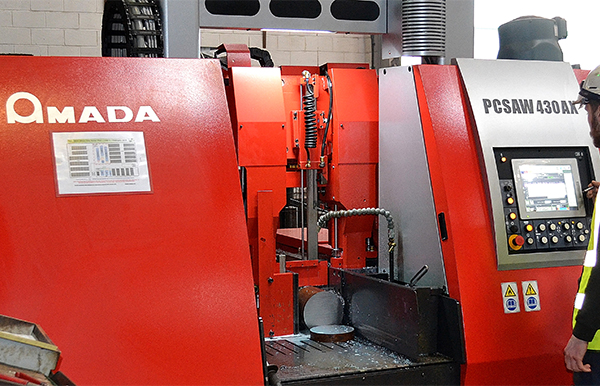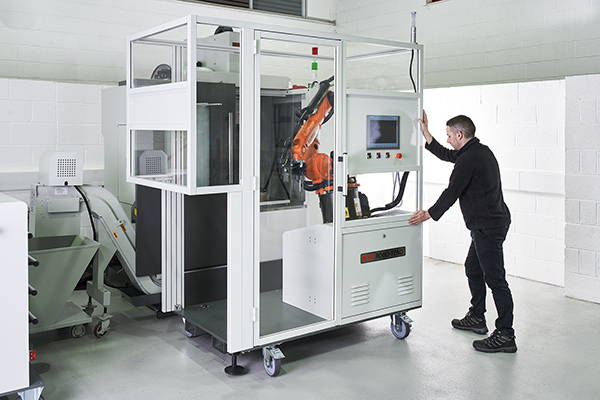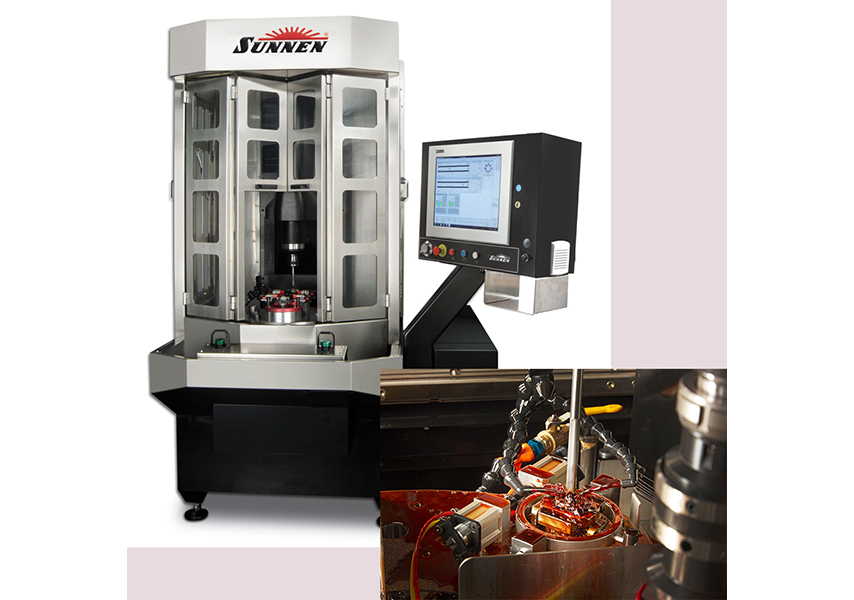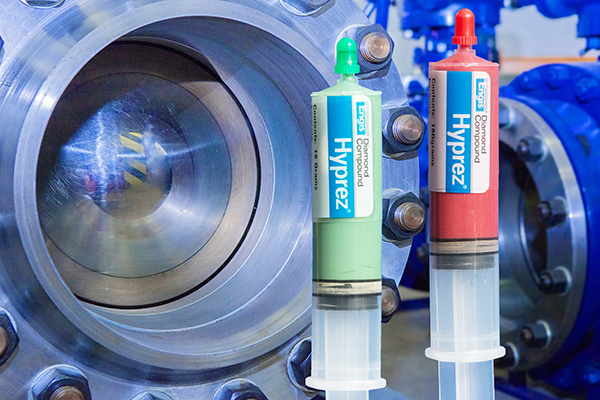Formed by Henry Barrett in 1866, Barrett Steel Ltd has grown to become the UK’s largest independent steel stockholder, today consisting of four divisions with more than 40 companies operating from 26 sites.

Due to higher business levels being experienced by the Barrett Engineering Steel division, a search was recently commenced for an efficient sawing solution that would meet requirements at two sites in the Midlands and northwest. This search prompted the company to invest in a pair of Amada PCSAW 430X/AX pulse cutting automatic bandsaws from Accurate Cutting Services.
In comparison with conventional bandsaws, Accurate Cutting Services says that Amada PC series machines deliver faster cutting by employing a novel mechanism to ‘pulse’ the blade feed pressure. This pulse forces the bandsaw’s tips to overcome any work hardening through the cut, and eliminate the unwelcome vibration harmonics that create noise and damage tip material.
Rob Fern, Barrett Engineering Steel’s Midlands branch manager, explains the reasons for purchasing the bandsaws: “In addition to build quality, the pulse capabilities provide the speed – especially on large diameters – and accuracy that we require. The main consoles also clearly display an estimated finish time for each job, which permits operatives to plan upcoming cuts, while the ability to download data related to blade performance is extremely useful for monitoring KPIs and promoting continuous business improvement.”
At Barrett Engineering Steel, the 430 mm cutting capacity Amada machines are currently being used to saw carbon and alloy grade steel, in both black and bright bar, including the company’s latest EN30B stock.
“As well as the bandsaws, we bought an RT feed conveyor,” says Fern. “The conveyor gives us the benefit of semi-automation and has resulted in a significant reduction in downtime. Indeed, the saw can run unattended for up to two whole shifts.”
For further information www.accurate-cutting.co.uk























